Hanoians are very proud of their distinctive food specialties as well. You might want to stay out of the debate about whether pho is better in the north or the south. But don’t miss local specialties like bun cha and cha ca.

Photo: Mark BowyerHanoi's Old Quarter
The city's old quarter teems with atmosphere. Cast your eyes above the crammed shopfronts for a glimpse of the traditional houses of the the 36 guild based streets. Walk amidst the grand edifices of the French quarter and explore Ba Dinh Square with its museums and imposing colonial era government buildings. A visit to Ho Chi Minh’s Mausoleum in the heart of the square is an inescapable rite for visitors to Hanoi.
Hanoi is where Vietnam's story begins and the city confidently asserts itself as the epicentre from which Vietnam's political and cultural power radiates. The locals will be sure to tell you as much.
Hanoians may not share the friendly exuberance of their Saigonese counterparts but engage them and you'll be charmed.
Below is a list of recommended sights in Hanoi.
Ba Dinh Square, Hanoi
Hanoi's Ba Dinh Square is packed with places of interest for travellers. It showcases some of the finest examples of early twentieth century French colonial architecture. There are also some imposing Soviet style artefacts of the Cold War here. Most importantly though, Ba Dinh Square is a shrine to Ho Chi Minh - modern Vietnam's founding father and includes his house on stilts, his museum and his mausoleum.
To read more and to view a slide show, click here.
Ho Chi Minh's House on stilts
When he took over as President of North Vietnam in 1954, Ho Chi Minh commissioned what must be one of the world's most delightful presidential residences. It's not large enough to be called a palace or mansion - but rich in character it is. Independent Vietnam's new president eschewed the imposing extravagance of the nearby French Governor's mansion. Instead he built this simple open wooden house on stilts surrounded by gardens, towering trees and a small lake.
To read more and to view a gallery, click here.
Ho Chi Minh's Mausoleum
In front Uncle Ho's house on stilts at the centre of Ba Dinh square sits his mausoleum. Its imposing authoritarianism is in direct contrast to the warm simplicity of his nearby home.
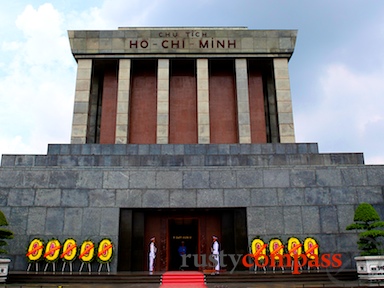
Photo: Mark BowyerHo Chi Minh's Mausoleum
Each day hundreds of locals and foreigners line up solemnly to pay their respects to Ho's embalmed and rather waxy looking corpse. It’s an essential rite for any visitor to the capital.
The mausoleum sits on the spot where on September 2 1945 Ho Chi Minh declared independence for Vietnam under the approving watch of hundreds of thousands of his countrymen and women and a handful of US officials with whom his Viet Minh forces had collaborated against the Japanese.
The French, just emerging from WWII, had other ideas and were soon reclaiming their former imperial prize. The stage was set for a thirty year struggle that would cost millions of lives and batter the prestige of France and the US.
The Mausoleum opened six years after Ho’s death in 1975.
To read more and to view a gallery, click here.
Ho Chi Minh Museum
Such is this man's role in Vietnam's national story, there is a Ho Chi Minh Museum in every town of any scale across the country. A student of propaganda might be inclined to visit several. Most travellers though will be content to get their dose of the great man's story here alongside his Mausoleum and house on stilts.
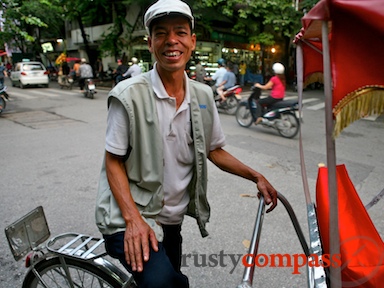
Photo: Mark BowyerCyclo driver Hanoi
The none too subtle Soviet hand is visible all over Ba Dinh Square and the Ho Chi Minh Museum was the Soviet Union's parting gesture of international socialist fraternity before it self destructed in 1989. As with the Ho Chi Minh Mausoleum, the museum's designers claim alarmingly to have been inspired by the lotus flower in the creation of their structure.
To read more and to view a gallery, click here.
One Pillar Pagoda
The oldest landmark of the Ba Dinh Square area is the One Pillar Pagoda. The site of the pagoda has had great significance in Hanoi since the city's founding 1000 years ago. Emperor Ly Thai Tong built the lotus inspired structure on a single pillar in 1049 to express his gratitude to Quan Am, the Goddess of Mercy following the birth of his son.
To read more and to view a gallery, click here.
Military History Museum
Vietnam has plenty of war museums - they're as ubiquitous as Ho Chi Minh museums. The most important of them is, unsurprisingly, located here in Hanoi.
The Military History Museum pits the relatively simple armoury of Vietnam's victorious Communists against the more sophisticated but ultimately failed weaponry deployed by the French and the Americans.
Prized pieces include tank 843, the tank that famously smashed through the gates of Saigon's Presidential Palace on 30 April 1975 marking the end of the Vietnam War (we are reliably advised that this one is the real deal and the one found in the grounds of the palace in Saigon is a replica). The wreckage of an American B-52 bomber has pride of place amidst a display of US military hardware in the museum grounds.
To read more and to view a gallery, click here.
Museum of Vietnamese History
Housed in one of Vietnam's most spectacular pieces of French era architecture, the Museum of Vietnamese History is home to the finest collection of artefacts from Vietnam's ancient and more recent history. If Hanoi's other museums have overwhelmed you with propaganda and war, this museum will come as a welcome relief both with its delightful setting and its superb collection.
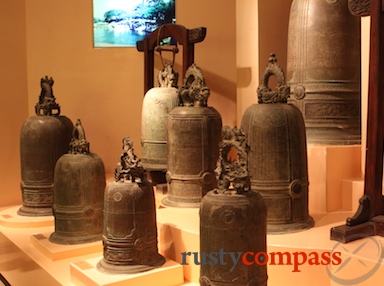
Photo: Mark BowyerMuseum of Vietnamese History
Concentrating on Vietnam's pre - twentieth century evolution, the presentation is refreshingly contemporary although exhibits lack context and detailed information in English.
Museum highlights include a collection of Dong Son drums, artefacts from central Vietnam's Cham kingdom as well as costumes and other pieces from Vietnam's last royal dynasty, the Nguyen Dynasty.
Hanoi Old Quarter
Don't expect Hanoi's Old Quarter to feel like the ancient streets of Middle Eastern or European cities. There's plenty that's new about the Old Quarter. And while newness increasingly engulfs the old, this maze of packed narrow streets is so far at least, winning a pitched battle to retain its magic.
Also known as the 36 streets, the Old Quarter has been a centre of commerce in Hanoi for more than 500 years. Street names starting with "Hang" such as Hang Bac - Silver St, Hang Gai - Silk St, Hang Buom - Sail St and Hang Da - Leather St describe the produce that the local guild specialised in and sold there. These days most streets have diversified but you'll still find a few streets that have retained their old specialty.
Temple of Literature
Hanoi's oldest major monument is the Temple of Literature, also known as Van Mieu. Remnants of Vietnam's pre 19th and 20th century history are few and far between so the Temple of Literature is definitely a worthwhile stop. Founded by King Ly Thanh Tong in 1070 in the decades after the establishment of Hanoi as Vietnam's capital, it became the site of the country's first University, Quoc Tu Giam in 1076. Little remains of the original structures but the atmosphere is tranquil and the grounds beautiful.
The temple is modeled on the temple at Confucius' birthplace in Qufu China and is a symbol of China's deep cultural influence in Vietnam.
Hoa Lo Prison - Hanoi Hilton
Hanoi's Hoa Lo prison achieved international infamy when captured American pilots sarcastically dubbed it the Hanoi Hilton during the Vietnam War. Presidential candidate and veteran US Senator John McCain is perhaps the best known of the prison's alumni to international visitors. But for the Vietnamese, the horrors of the prison, known to them as Hoa Lo, date back many decades to the barbaric repression meted out to their nationalist leaders by the French colonial administration.
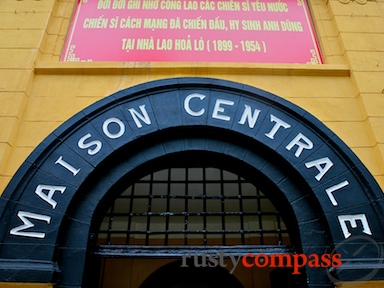
Photo: Mark BowyerHoa Lo or Hanoi Hilton prison, Hanoi
And John McCain is not the only political star to graduate from the Hanoi Hilton. Dozens of Vietnam's Communist luminaries predated McCain by decades including four former Communist Party Secretaries - Truong Chinh, Le Duan, Nguyen Van Linh and Do Muoi. These men rose from their shackles to become the most powerful members of Vietnam's Communist leadership both during and after the American War.
Hoan Kiem Lake
If Ba Dinh Square is Hanoi's political heart, Hoan Kiem Lake is its soul. Also known as the Lake of the Restored Sword, Hoan Kiem is both rich in legend and one of the city's most well used and atmospheric public spaces.
Hoan Kiem Lake's central location means you won't miss it. It sits between the Old Quarter and the French quarter. But don't just wander past the lake. Joining the early morning or late afternoon Tai Chi rituals or just chilling out and people watching are great Hanoi experiences.
If you're extremely lucky, you may even spot the lake's famed turtle. It raises its head above the murky waters every few years in an event that attracts great attention and is considered to be auspicious.

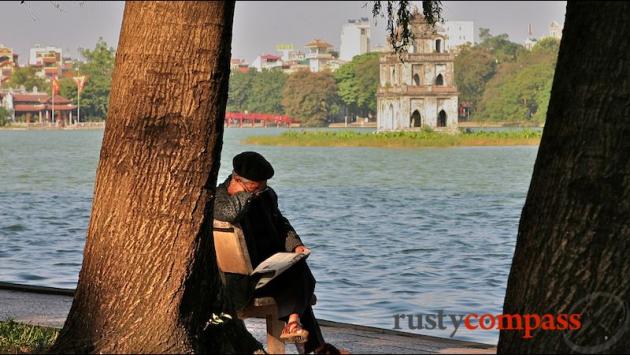



There are no comments yet.